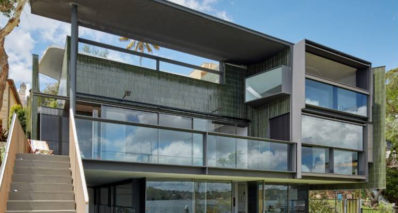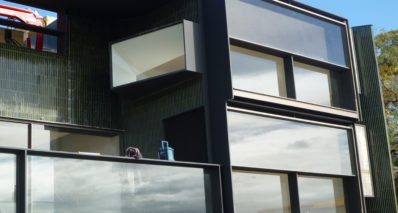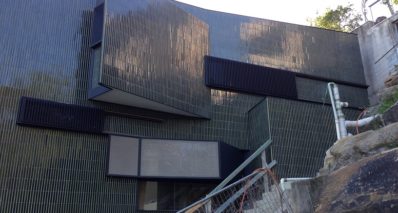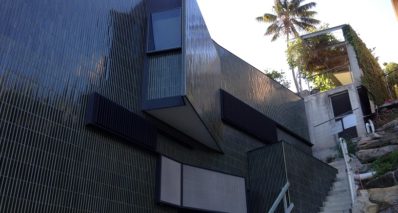Projects
Wendy Lewin Architects Waterfront House - Birchgrove
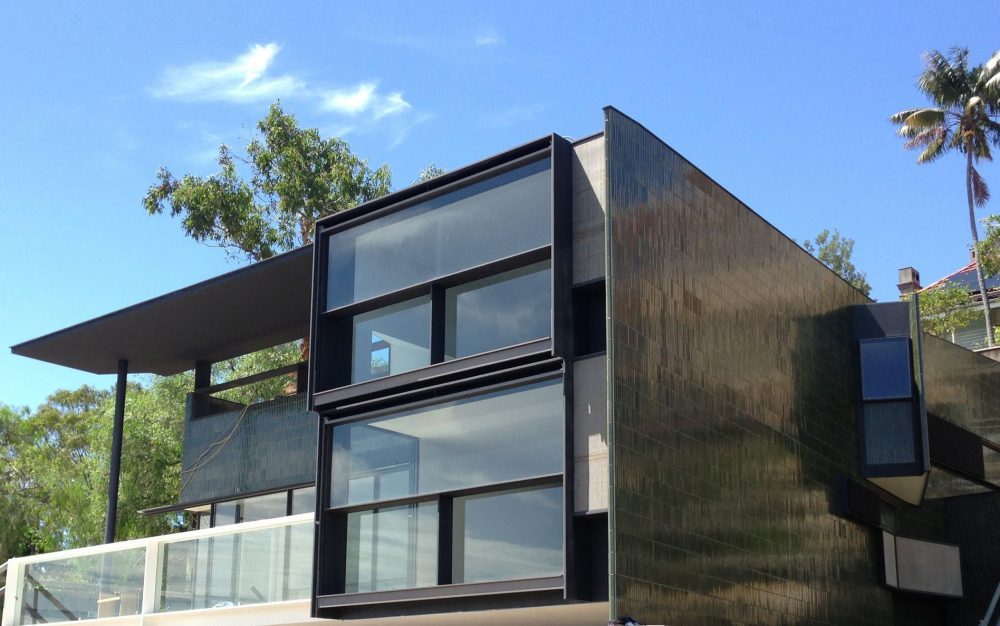
Design Concept
Composite Glazed Wall, Window-Box Frames and Roof for Waterfront House – Sydney
Architect Wendy Lewin designed multilevel framing for doors and window boxes that could incorporate both standard and unique glazing systems manufactured by Vitrocsa Australia, and an 11.5m long span roof for a new waterfront house in Birchgrove, Sydney.
Wendy Lewin Architect – Mosman, NSW, 2088
wlewin@ozemail.com.au
As for many of her past projects, Wendy’s original intention was to use Mild Steel Plate for these expressed frames which are conceived as “structural joinery” units. However, unlike past projects, the tendering process identified the cost for the manufacture, delivery, handling and placement of these steel plate elements for this project, was well beyond the scope of the building budget.
Site access from the street was difficult, and too narrow for a crane, making delivery, handling and placement of the welded steel plate assemblies more complex and expensive.Good site access from the harbour was available but the cost of barge-cranes, and the on-site placement by an additional crane, also brought complexity and significantly greater handling costs.
The north facing harbour-side location, exposure to high winds, wind-driven pollutants and the harsh maritime environment, also meant there was greater potential for corrosion and a reduction in long time material durability.
The glazed wall, door and window box frames are various sizes and shapes, and the roof has a free span distance of 6.5m from the outer support column to the bedroom on the other side. DuFLEX composite panels offered a stable, lightweight, corrosion-resistant, cost effective and high performance option, that could be used in the same way as the steel plate, without compromises having to be made in the design for high wind loads.
Construction
ATL Composites manufactured the DuFLEX® panels with a combination of 80 kg/m3 structural foam cores, ranging in thickness from 12 mm through to 50mm with a variety of E-fibreglass laminations including multiples of 1200grm quadraxials, to meet the load requirement depending on the position and type of part. 2mm solid E-Fibreglass / epoxy panels were also fabricated and incorporated into the box structure to form rebates for the window glass and insect screens.
The structural stiffness, combined with the light weight of the panels, resulted in a 90% material weight saving over the original steel plate design, and a significant reduction in loads. In addition, the panels provided excellent thermal insulation and corrosion resistance in comparison to steel.
No cranage was required for the delivery and placement. All DuFLEX elements were carried in and the light weight of the components ensured ease of handling with a reduced risk of worker injury during installation.
Components were cnc-routed from electronic files and shipped to Sydney for assembly at Caporns Pty Ltd, on Sydney’s northern beaches, using ATL’s Techniglue R60 adhesive and KINETIX® R246TX laminating resin. Caporns were contracted to install on site and worked closely with the main building contractors, Aqupa Pty Ltd.
“Both the project engineers – James Taylor and Associates Pty Ltd and I sought advice from ATL during the design process” said Wendy. “The engineers and tech staff at ATL were extremely helpful in materials specifications and in particular in developing with JTA the shear plate connections for the head of the column for the roof. Overall, the high performance of the materials has exceeded our expectations and I continue to specify DuFLEX panels for other projects.”
